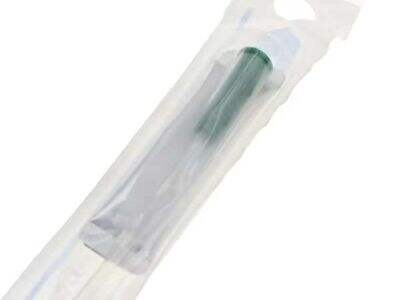Ako neki netko ima problema s pisanjem ili često mora ići u toalet, njegov liječnik možda preporuči korištenje katetra. Kateter je posezano uređaj koji djeluje kao cev za mokraćnu vrećicu. Pomoga u izbacivanju moči, tečnog odbaciva koje naše tijela proizvode. Ali što je baš kateter, i kakvi su vrste? Istražimo ovo zajedno.
Što je Kateter?
Katetri su tanki, fleksibilni cijevi napravljeni od materijala poput plastike ili silikona. Ove cijevi su dostupne u različitim veličinama i oblicima, ovisno o namjeni i korisnicima. Neki katetri su napravljeni da prolaze kroz uroter, cijev koja omogućuje moći da napusti mokraćnu vrećicu i izađe iz tijela. Ostali PICC kateter se stavljaju direktno u mokraćnu vrećicu kroz malenu rupu na stomaku, poznatu kao stoma. Ta rupa se čini od strane liječnika za pacijente koji trebaju više podrške.
Prednosti i nedostaci katetara
Umetanje katetara je dvostručna mač. Pozitivna strana jest u tome što postoji kateteri koji pomažu osobama koje ne mogu prazniti svoj mokraćnik samostalno. Za one s zdravstvenim problemima, kateter može biti koristan pomoćnik. Ako radite s pacijentom s presadom organa, oni također štede vrijeme i novac — nisu im potrebne česte posjete toaletu, što može biti korisno za one koji se možda ne mogu sami doći do toaleta. Međutim, kateteri mogu biti neprijatni i nositi rizik od infekcija mokraćnjaka. Ključno je razgovarati s liječnikom o tome što je najbezbjednije za svakog pojedinca, kako bi pomogli izbalansirati bilo kakve rizike i zdrave koristi.
Kada ljudi koriste katetre?
Kateteri se često koriste zboje medicinskih razloga. Na primjer, mogli bi biti potrebni nakon operacije, kada neki pojedinci možda nisu u stanju samostalno mokreti. Kateteri također pružaju pomoć ljudima s drugim medicinskim stanjima, uključujući ozbiljne bolesti vratnog mrlja i bolest poznatu kao široljeva skleroza. Ta okolnost može činiti teškim ljudima upravljanje međuždočnim mokretom. Ali drugi ih mogu koristiti Katarter za fiksaciju za skrb o sebi, na primjer za upravljanje nekontinencijom, u kojoj osoba ne može kontrolirati kada će mokreti, ili jednostavno iz praktičnih razloga. Ako osoba mora koristiti kateter redovito, mora naučiti kako ga umetnuti sama. Može biti malo teško na početku. Možda ćete morati vježbati mnogo puta i dobiti pomoć od medicinske sestre ili liječnika kako biste se osjećali sigurno prilikom obavljanja postupka.
Kako mogu kateteri pomoći
Iako se ideja o korištenju katetera možda čini strašno ili neugodno, stvarno može poboljšati kvalitet života osobe koja pati od određenih medicinskih stanja. Na primjer, osoba s ozbiljnom vrećastom bolešću možda će imati velike poteškoće da samostalno moci. U takvim slučajevima, kateter može omogućiti veću udobnost i pružiti bolju zaštitu od infekcija urinarnog puta, koje mogu nastupiti kada je urin previše dugo u štakorcu. Za one koji imaju nekontinenciju urina, kateteri se mogu koristiti za upravljanje ovim problemom i dopuštaju im da rade stvari bez anksioznosti potrebe brzog pronaći toalet.
Odabir odgovarajućeg katetera
Imamo mnogo različitih vrsta katetera, pa je od vitalnog značaja odabrati pravi koji odgovara jedinstvenim potrebama svakog pojedinca. Neki kateteri su namijenjeni za jednokratnu upotrebu i odlaganje; drugi se mogu ponovno koristiti nakon čišćenja. Liječnik ili medicinska sestra pomoći će vam u određivanju koji je kateter najprikladniji za svaku osobu. Također će pokazati kako pravilno koristiti kateter i kako ga čuvati kako bi se osiguralo da sve ostane sterilno i sigurno.
Dakle, kratko rečeno, HSG kateter su mali, fleksibilni cijevi koji pomažu ljudima koji imaju problema s močju. Razlikuju se u veličini i obliku i mogu se koristiti za medicinsku pomoć ili individualne potrebe. Iako postoje i prednosti i nedostaci korištenja katetera, oni imaju veliki uticaj na poboljšanje kvalitete života osoba koje imaju određene zdravstvene probleme. Izbor pravog katetra za pojedinca je ključan, a medicinski stručnjak može pomoći u identifikaciji onoga koji najbolje ispunjava potrephe pacijenta. Kateterizacija će biti lakša i mnogo udobnija uz podršku i vodstvo pravog stručnjaka.
 HR
HR
 EN
EN
 AR
AR
 BG
BG
 CS
CS
 DA
DA
 NL
NL
 FI
FI
 FR
FR
 DE
DE
 EL
EL
 HI
HI
 IT
IT
 JA
JA
 KO
KO
 NO
NO
 PL
PL
 PT
PT
 RO
RO
 RU
RU
 ES
ES
 SV
SV
 IW
IW
 ID
ID
 HU
HU
 TR
TR
 MK
MK
 YI
YI
 AZ
AZ
 KA
KA
 BN
BN
 EO
EO
 LA
LA
 MN
MN
 TG
TG
 UZ
UZ
 HAW
HAW
 GD
GD
 XH
XH

